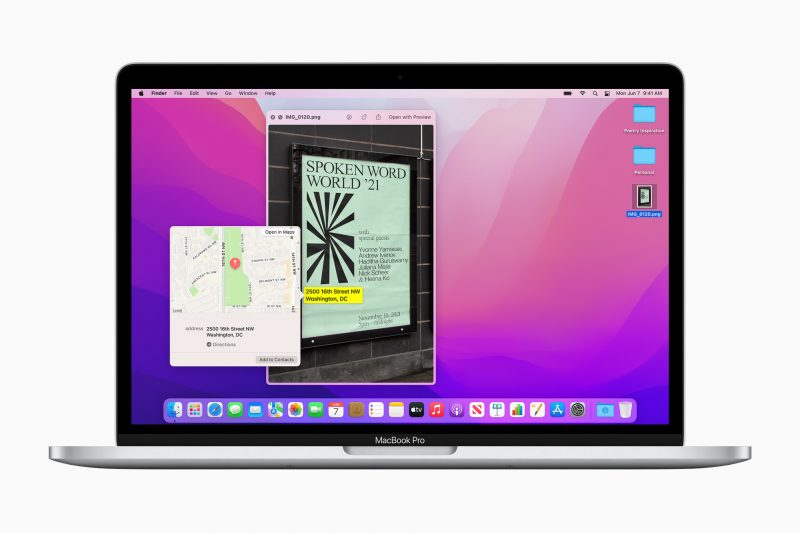In a surprising move, Apple seems to be making Live Text available to older Intel-based Macs, therefore removing the feature’s previous exclusivity to the brand’s M1 chip-powered devices. Prior to this, it was revealed shortly after Apple’s WWDC 2021 keynote on Monterey that several new features – including Live Text and Portrait Mode on FaceTime – will not be coming to older Mac devices that use Intel CPUs.
For those unfamiliar, Live Text is the company’s new first-party image scanning and text identifying feature, which was created to rival Google Lens. The expansion of the feature was noted in a document for the MacOS Monterey beta 4, where it is listed to now be available on “all” Macs that support Apple’s latest operating system update. According to the document, the following are the list of compatible machines:
- MacBook: Early 2016 and newer
- MacBook Air: Early 2015 and newer
- MacBook Pro: Early 2015 and newer
- Mac Mini: Late 2014 and newer
- iMac: Late 2015 and newer
- iMac Pro: Late 2017
- Mac Pro: Late 2013 and newer

Tech video creator Rene Ritchie notes that bringing Live Text to Intel Macs was always possible, but processing and scanning live text via the built-in camera is a demanding task for Intel CPUs since they lack Apple’s neural engine. Twitter user @khronokernel, in a reply to a Ritchie’s tweet, claims to have gotten the feature and the Monterey beta working on a 2008 Mac Pro – therefore confirming Live Text’s expanded compatibility to non-M1 devices.
Verified myself, Live Text is supported on all Intel Macs it seems. No reliance on the T2, working nicely on my 2008 Mac Pro!
It is a bit slow, however that’s more likely an issue with the machine’s 14 year old CPUs pic.twitter.com/BZtYuaGK72
— Mykola Grymalyuk (@khronokernel) July 27, 2021
With Apple expanding the compatibility of the new feature to Intel-based Macs, users are hoping that Portrait Mode would also receive the same treatment. Nevertheless, this move puts to bed accusations of planned obsolescence to older Mac devices as Apple transitions Macs to M-series chips.
(Sources: The Verge, Macrumors)
Follow us on Instagram, Facebook, Twitter or Telegram for more updates and breaking news.



